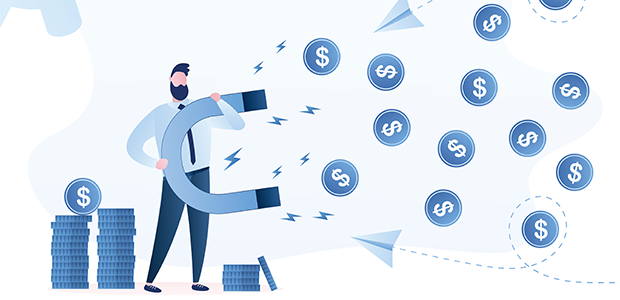
Reduce customer churn by focusing on net dollar retention
If you’re serious about tackling B2B customer churn, there are several things you can do. One key strategy is to focus on building more revenue with your existing customer base. Before we go into that, it’s important to note that a state of zero churn is nearly impossible to achieve. It's going to happen at some point.
There are often decisive causes for churn, like bankruptcy or your customers changing their line of business. Maybe the company grew and hired new staff or suffered considerable revenue declines. Nevertheless, it’s your job as a founder or CEO to reduce customer churn by all available means.
Net dollar retention (NDR) is likely one of the growth engines for your SaaS business - selling more into the existing customer base that you have worked so hard to cultivate. But just as important, if you're not growing your existing customer base, they are at risk of churning. I would argue that selling more into your existing base is the acid test of customer happiness.
SaaS pioneers like Salesforce provide great inspiration, as they are masters of expanding within their existing customer base. Their secret is that they strive to cultivate a trusted relationship with clients, guiding them to repeated success. Salesforce is now the world’s largest SaaS business with revenue of $21bn annually and net income of $4bn. Salesforce gains an impressive >70% of new ARR from its existing customer base. This is an enormous engine of growth and is a strategy every SaaS company should look at closely.
What is gross churn?
Gross churn, or gross dollar churn, simply means you're losing revenue from your existing customer base. What’s perplexing to many entrepreneurs is that you often hear people discussing negative churn or negative net churn. How is negative churn possible? Simply, this refers to a period where you're gaining more revenue from your existing customer base than you're losing.
That number is often referred to as net dollar retention (NDR). Not to be confused with similar terms like net revenue retention (NRR), monthly recurring revenue (MRR), or ARR. In summary, if you're selling more into your customer base than you're losing, that would represent positive NDR.
Net dollar retention is not a customer success metric; it’s a company metric — and one of the most important for any enterprise. It should be considered part of the fabric of the business.
Increase customer value
Concentrate on bringing value to your customers. It’s good to aim for stickier products that are difficult to ditch for an alternative but don’t attempt to make your customers prisoners to any one solution. Instead, focus on solving their problems, and they will want to stay with you. Value is ultimately defined by customers because even if you get away with selling them something they don’t value, eventually - in the SaaS world - they will churn.
Instead of selling features, sell the total value of your product and explain clearly how it solves critical business issues. Enthusiastic and thoughtful onboarding is crucial if you want customers to renew. Onboarding is the best predictor of churn - if you do it poorly, don’t expect your customer to stick around. If you miss that onboarding window and “time to value” drags on - customers will move on to other priorities, and your chances of re-igniting the process and renewal will dim. It is your responsibility as the vendor to onboard well - it's part of the value - rather than your customer’s responsibility.
Know your customer
Make an effort to understand your customers’ problems fully. Occasionally they will be reluctant to give away information, which makes that difficult. But if you build as intimate an understanding of their issues as you can, you will be in a much stronger position to drive up revenue within that customer base.
Eventually, trying to get inside the motivations of every single customer might become too much - that’s when you can start putting them into “buckets”; say, healthcare, education, or retail. The key is that you know their problems and know clearly how you bring them value.
Offer something extra
You can sell more seats or more incremental units of whatever landed you the initial sale, but long term, it's almost always better to have other related products of value for your customer base. Small details like differentiated pricing and effective segmentation of products are good strategies. Landing customers at a lower price and expanding over time is a time-tested strategy that works. Another common approach is to consider selling enterprise licenses so that the entire organization is using your product over time. Products that are related and complementary are great additions as well - potentially additions that only specific verticals might be interested in, for example.
If you have a customer base that trusts your solutions and it helps them build their business, there is a good chance they are willing to buy more from you. Customers want solutions, and most companies with any real margins are willing to pay for them. That’s where the value of great salespeople becomes apparent. We will cover that another time.

